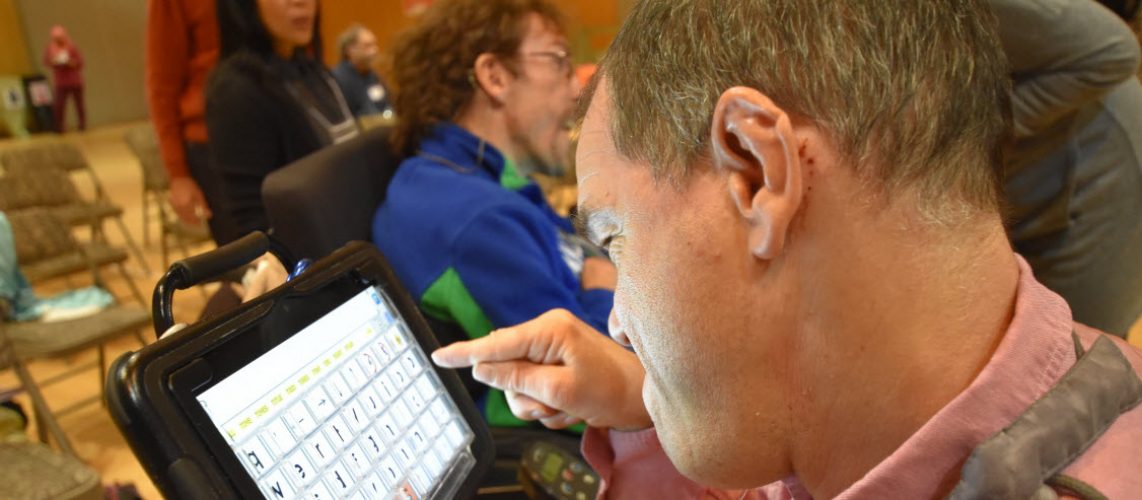Augmentative and Alternative Communication (AAC) refers to the various ways individuals who cannot speak may communicate their ideas. Some individuals may be non-speaking from birth due to disabilities such as cerebral palsy. Others may become non-speaking later in life due to other disabilities like strokes or brain injuries from car accidents.
Individuals may use various combinations of alternate methods of communication such as displays with pictures, alphabet or words, gestures, sign language, computers, and electronic talking devices.
Even if individuals have complex communication needs, they can participate actively in life through the use of AAC tools and strategies. Children go to school and participate. Adults do meaningful work. They make their own choices. AAC allows them to express their wishes and feelings and control their lives. AAC gives individuals opportunities, which many of us take for granted: social interaction, intimate expression, and communicating effectively in an emergency.
For more detailed information, please visit the American Speech-Language-Hearing Association’s page on Augmentative and Alternative Communication.
